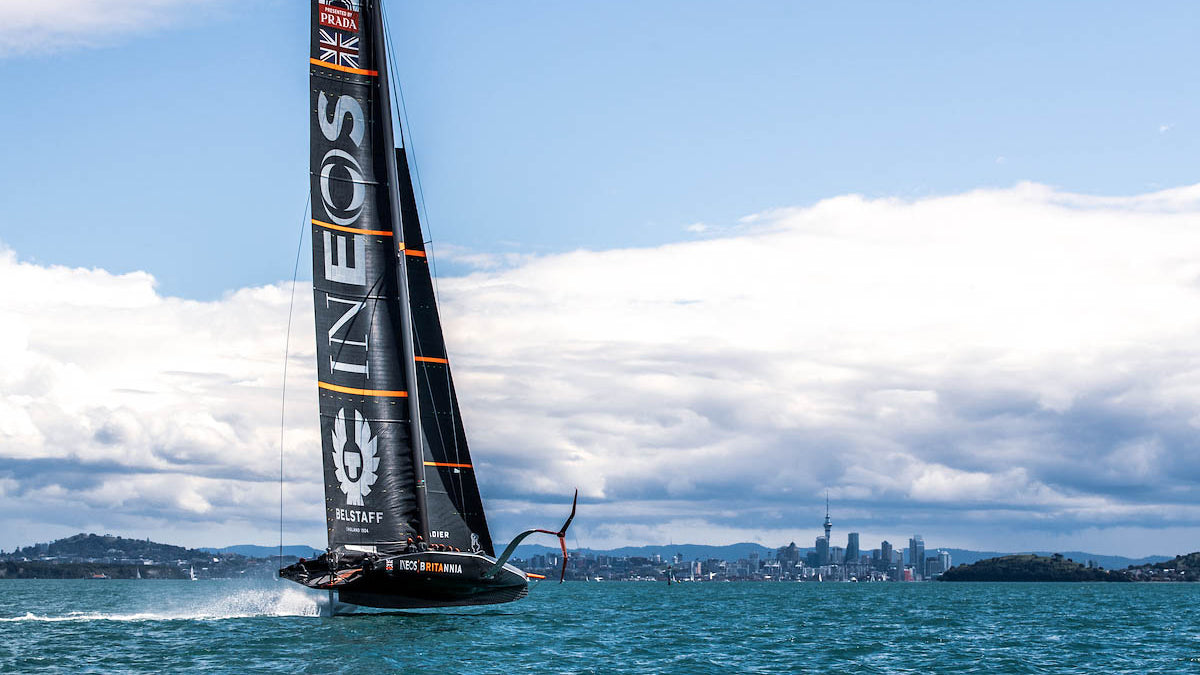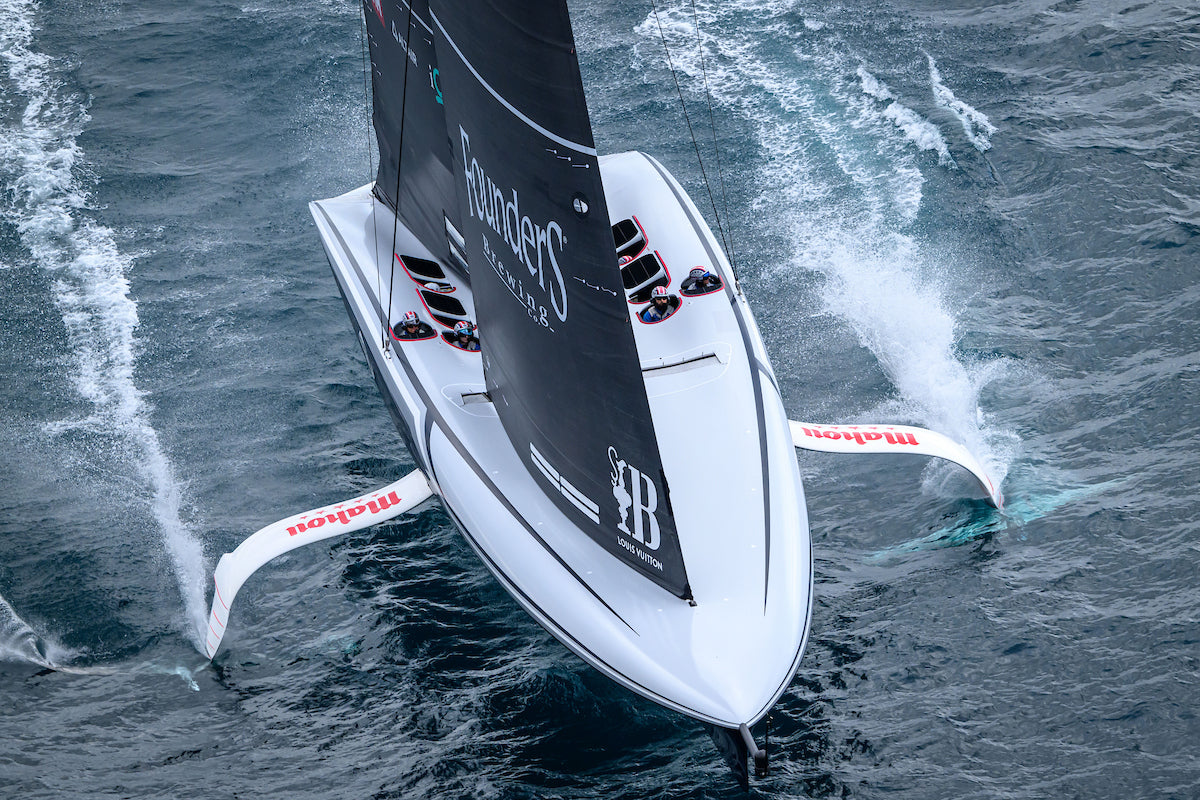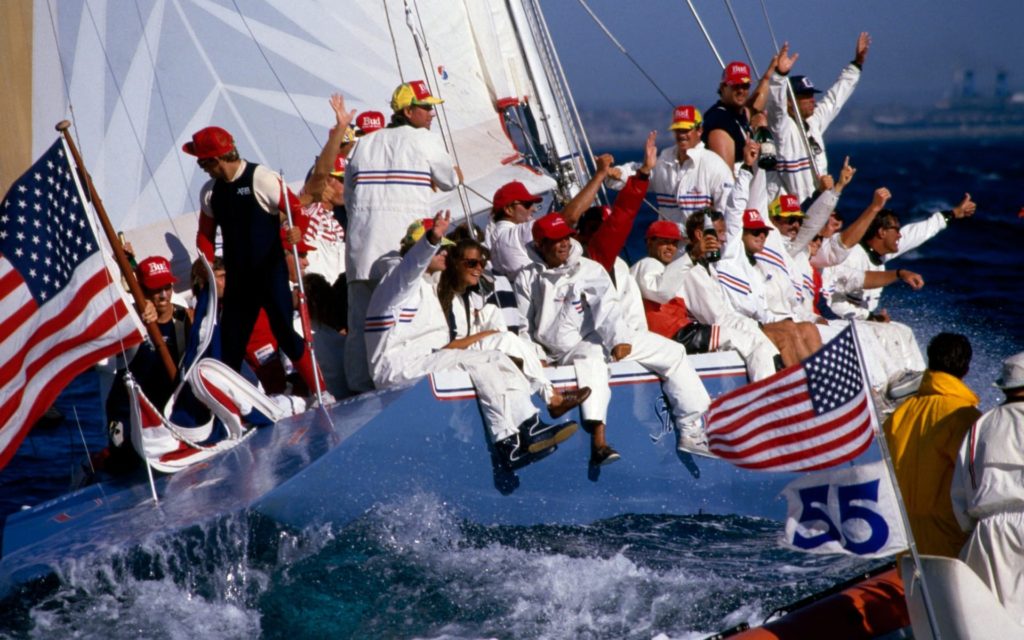#FIRSTSAILFEELING: INEOS TEAM UK
The Team Sail Designer Gautier Sergent Recounts A Milestone in the Lead Up to the 36th America’s Cup

Gautier Sergent is a behind the scenes force within the North Sails family and the name attached to many of our sport’s most influential projects. He is our Head of R&D and is often a skipper’s first call for bouncing (what seems like insurmountable) ideas around until they together find a way for them to become a reality. Currently, embedded with INEOS Team UK as part of their design team, Gautier splits his time between his home-base is Lorient, France, and England, Italy, and New Zealand.
For a veteran with serious street-cred, you’d expect a new boat launch would be routine. Still, each project is met with the same anticipation as Gautier felt when he began his career as an apprentice designer at the North Sails loft in Auckland.
“No matter how many of these projects you do, you always worry the same way, or at least as much,” Gautier remarked. “The older you get, the more you know what can go wrong. The nature of these projects means you are always in unchartered territories. Forget everything you know; break the mold, and start again. If you stop worrying, you have done your time, and you have not pushed the envelope enough. That’s when you retire.”
The INEOS AC75 was the second boat to hit the water in advance of the 36th America’s Cup. And we, along with Gautier, waited with bated breath to view the first time Britannia went sailing. Outfitted with Gautier-designed 3Di twin-skins and headsails, the team took flight earlier this week.

“The first hoist is always the most stressful,” explained Gautier. “It the moment of truth where we find out if we got the geometry right; geometry is a major parameter in the flying shapes. When the geometry is right, you know there’s a fighting chance.”
We did have to ask why one of the industry’s most sought-after sail designers, with decades of experience, is stressed by something that seems like a sure fit?
“We’re working with extremely tight margins, and there is little room for error,” Gautier clarified. “It’s exciting to see the boat get on the foils, in addition to being a huge relief! Everything is moving and changing during the design phase, and the first sail is our moment of truth. The boat, on its foils, is a major milestone and officially puts us into the next phase, testing- lots of it.”
INEOS will spend the comings week putting Britannia through the paces, and Gautier will be comparing his models against what he sees on the water. The validation loop is vital because it aims to make the sails, system, and maneuvers more reliable and perform as expected. Replication is crucial and the team’s ability to repeat success is critical as they get closer to race days. And as many sailors know, what you do is only as good as what you can replicate.
























